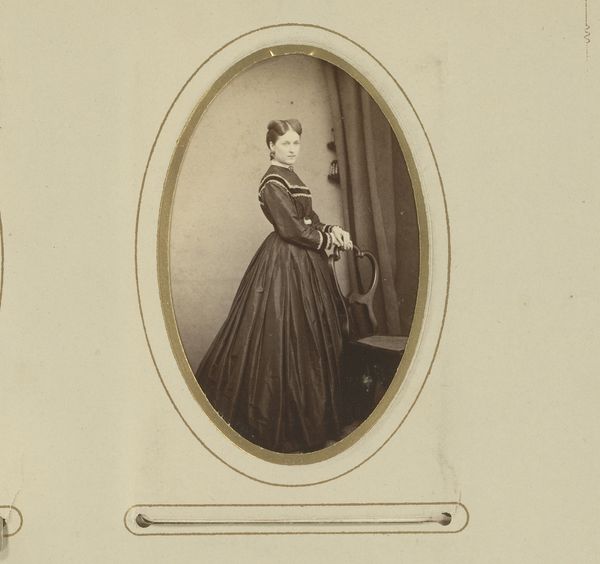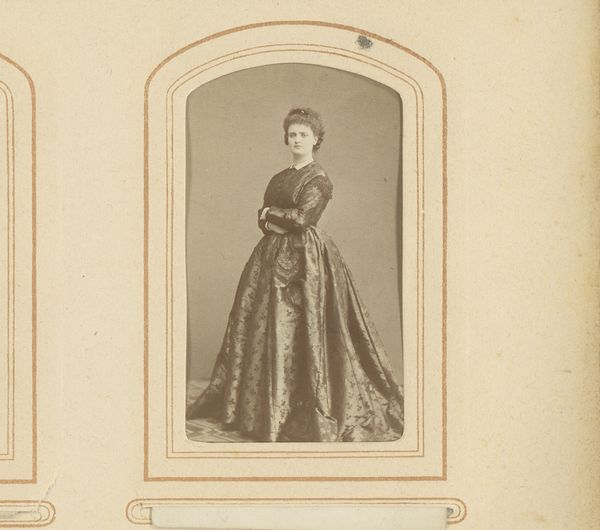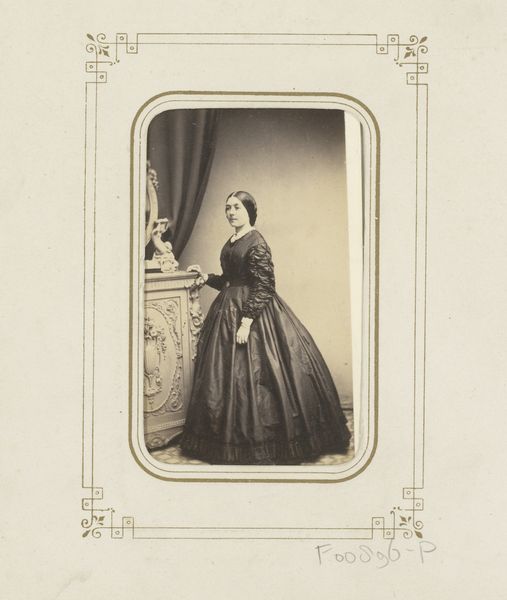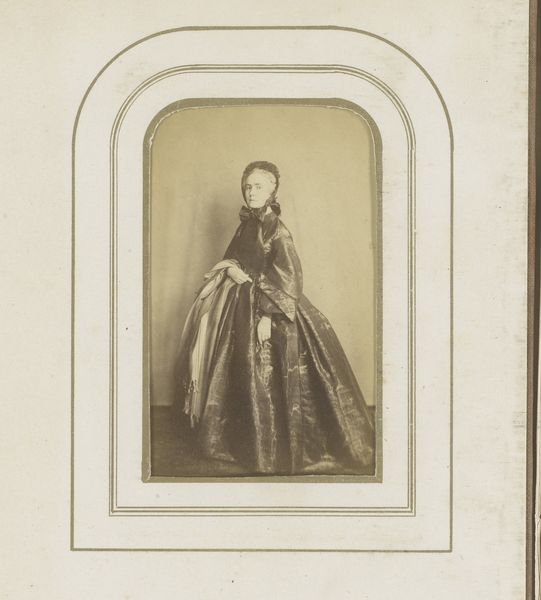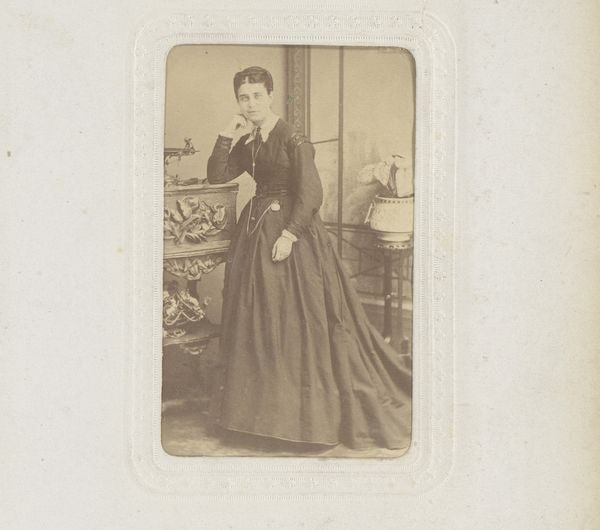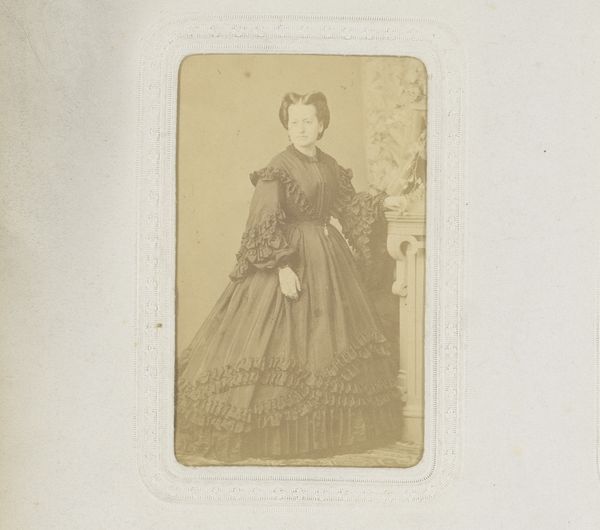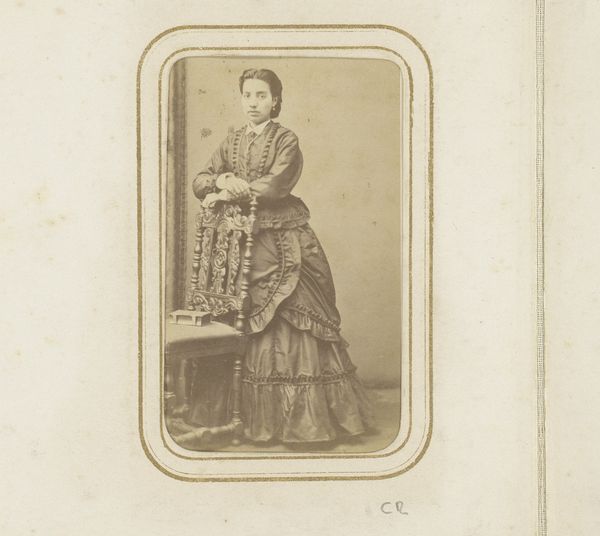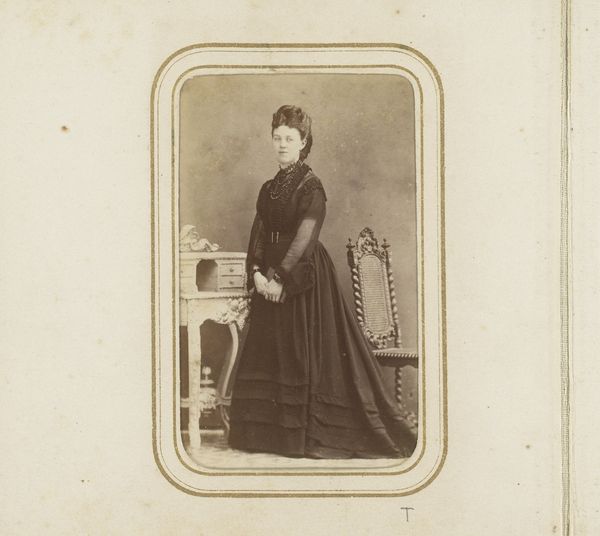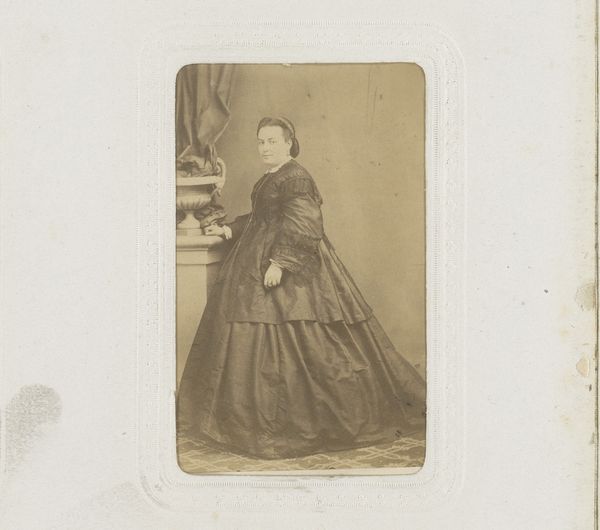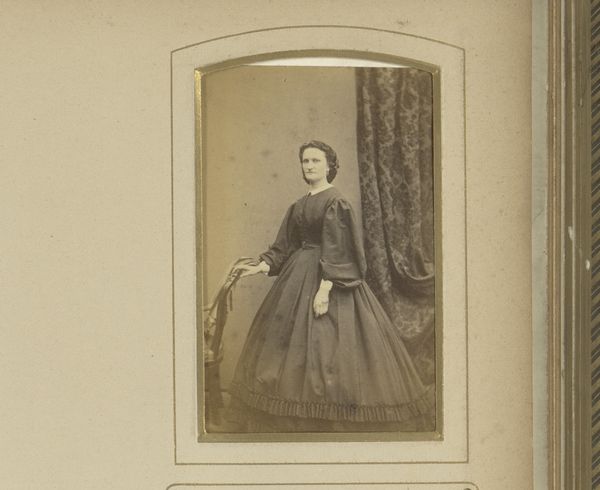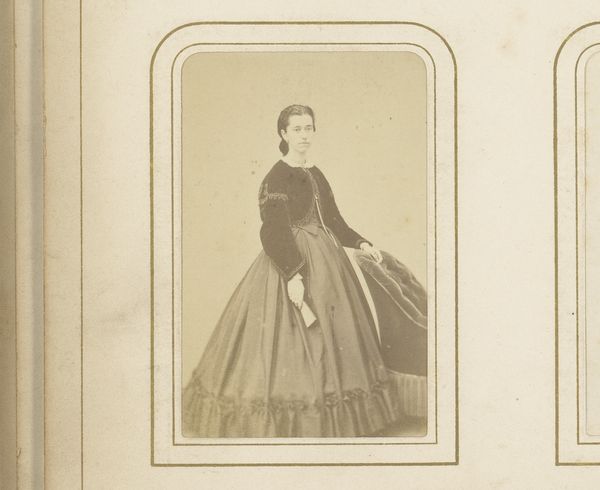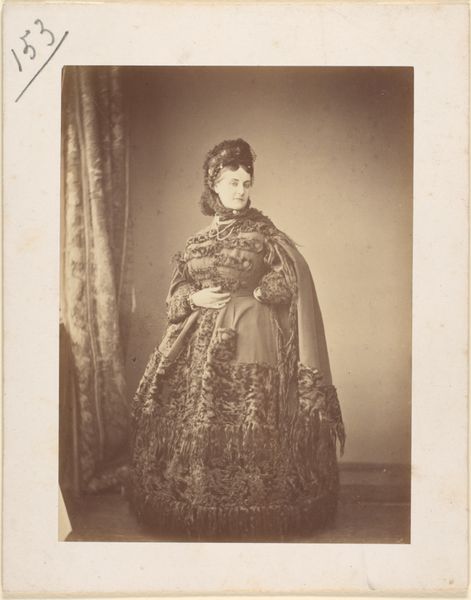
Dimensions: height 106 mm, width 61 mm
Copyright: Rijks Museum: Open Domain
Curator: This captivating image is a gelatin-silver print, dating roughly from 1855 to 1890, entitled "Portret van Pauline Lucca" and credited to H. Lehmann & Co. The print, like many portraits of the era, showcases a posed subject against a fairly austere backdrop. Editor: My first impression is a certain… wistful melancholy. The woman's gaze over her shoulder, combined with the darkness of the dress and subdued lighting, speaks of reflection, maybe even quiet defiance. There’s something staged, and yet… vulnerable. Curator: I see your point. But I also find it incredibly interesting to consider the industrial processes behind this very act of representation. Gelatin-silver prints marked a significant shift. Here, mass reproducibility collided with the burgeoning demand for personal portraiture, transforming both photographic production and the very idea of "self." Who has access, and who's being shut out by economics and bias? Editor: Absolutely! Access to this medium was undeniably skewed along lines of class, gender, and race. To have your image captured like this would be a conscious performance of status, or a yearning towards acceptance from the hegemonic culture. What narratives about identity, gender and power does it subtly reveal through its presentation and framing? Curator: The photographic practices also involved a system of labor. It may have shaped her comportment but this speaks to material pressures. What sort of studio apparatus was used to constrain the body into this image? The very notion of ‘catching a likeness’ was steeped in contemporary beliefs and shaped the technical decisions. Editor: Yes, and beyond the immediate portrait, this connects to a wider understanding of representation. What were the conventions in place dictating appropriate ways of embodying gender, class, and beauty in the nineteenth century? Who defined those, and to what purpose? It speaks volumes about cultural values of the era, and challenges viewers like ourselves to analyze such value in art history today. Curator: I'm left pondering the silent dialogue between materiality and image. Gelatin-silver gave access, in a way, and also constrained through the industrial process. How the act of portraiture transformed the very idea of identity! Editor: Agreed. Seeing her gaze as a direct, although crafted, link back across time makes me question and scrutinize who controls those gazes. In the quiet tension of this portrait, questions are posed which are still valid and burning.
Comments
No comments
Be the first to comment and join the conversation on the ultimate creative platform.
